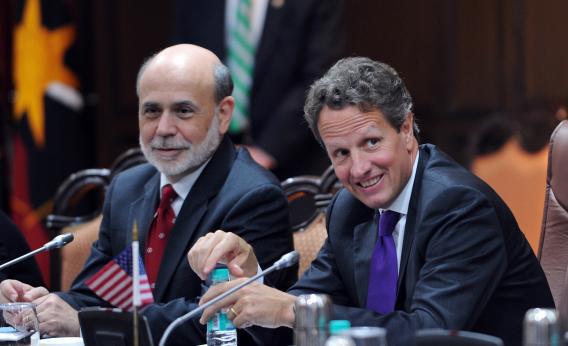A very common conceit among practical participants in financial markets is to try to distinguish between asset price moves driven by “fundamentals” and asset price moves that are somehow being “artificially inflated” by cental bank action. This is a concept that bears approximately zero analytic scrutiny, which is why Mohammed El-Erian just passes it off without explanation in his FT column:
Essentially, the Fed is inserting a sizeable policy wedge between market values and underlying fundamentals. And investors in virtually every market segment – including bonds, commodities, equities, foreign exchange and volatility – have benefited handsomely. In the process, many asset prices have been taken close to what would normally be regarded as bubble territory, with some already there.
Central bank action, both real and perceived, rules the investment day, and will continue to do so for now. This is also the case in Europe.
El-Erian might have tried to cite some data in support of this theory, but there isn’t any. But more broadly, the idea doesn’t make sense. It’s a fallacy to look at what a central bank does and try to judge it against a counterfactual scenerio in which the central bank “doesn’t do anything” and therefore judge events in the world to be the consequence of action rather than inaction. It’s always been true that what a central bank does is an important driver of short-term economic outcomes. The only way for that to not be the case would be for there to not be a central bank. But the reason central bank policy matters is that it changes expectations about real economic outcomes. If Fed action boosts the outlook for employment and income growth, then of course stock and commodity prices surge. What else would happen? But there’s no wedge between the real outlook and the Fed’s activities, the Fed’s activities impact the market because they impact the world.
